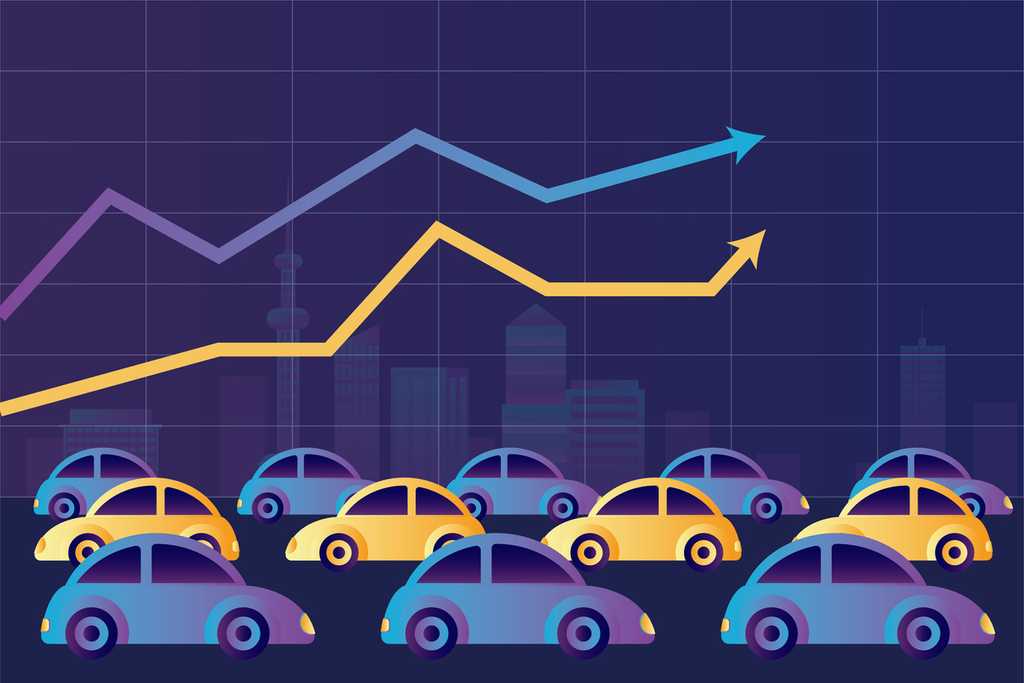Car insurance premiums have increased throughout 2022. Multiple factors may help explain why. These include the effect of inflation on insurance companies' business operations and a spike in both the frequency and severity (cost) of car accidents. Each of these factors has increased insurers’ cost of doing business. In response, they’ve increased premiums to remain competitive in their industry.
Your car insurance premium may have increased in 2022
If you’ve received a car insurance bill in 2022, it might have come with an unpleasant surprise: a premium increase, even if you haven’t had a claim or any recent violations.
The fact is, premiums for car insurance have been rising across the country all year. Progressive, the country’s number one car insurer, stated in a July financial report that they raised rates in 17 states by an average of 6% in the second quarter of 2022. Another leading insurer, Allstate, stated that they raised car insurance premiums in 45 states in the first six months of the year. Five of those states saw average premium increases of at least 10%. (This doesn’t mean every customer had a 10% increase; just that the statewide average premium change was +10%).
When insurers’ business expenses go up, they raise premiums
Calculating insurance premiums is a complicated task. But the bottom line is, well, the bottom line. Insurance companies are for-profit businesses. When their expenses rise, they’re likely to pass those costs on to their customers. This means you might have gotten a car insurance premium increase in 2022 even if you haven’t had a claim.
So what is going on? There's no single, simple answer. But we’ve identified three big trends that have likely contributed to your growing insurance bill.
Inflation has impacted the overall cost of doing business
From the gas pump to the grocery store and beyond, inflation has dented our pocketbooks in 2022. The August 12-month inflation rate in the U.S. was 8.3%, while monthly inflation rates have been at 40-year highs throughout most of the year.
Inflation affects our personal finances when our money doesn’t buy as much as it used to. But it affects a business’ finances as well. Everything needed to operate — from employee salaries, to real estate and technology, to fuel and other consumables — costs more. And while a business can sometimes absorb those and other added costs for a short period, sooner or later they’ll pass them on to consumers. In the case of an insurance company, this means bumping up premiums.
Traffic fatalities (and likely the number of accidents) have increased since 2020
Nearly 43,000 people died in traffic accidents in 2021, according to the National Highway Transportation Safety Administration (NHTSA). Not only is this a 10.5% increase from 2020, when the pandemic had us all driving less, but it’s a 16-year high. While NHTSA hasn’t yet released data for the number of police-reported accidents in 2021, it’s likely to show a similar spike. (For reference, there were 6.8 million accidents in 2019, the last non-pandemic year for which NHTSA has published data.)
When accidents happen more frequently, insurance companies have more claims to settle — and need to pay more money to customers and third-party claimants. And if those claims cost more to settle now than in the past, you have a formula for dramatically increased premiums. This takes us to our next point.
The cost to settle car insurance claims has increased
Inflation and other economic trends have impacted areas of the economy that affect the cost to settle claims.
Car repair costs have increased for multiple reasons. Inflation has pushed up the value of cars, which has driven repair costs. Parts have been harder to get due to supply chain disruptions, so they now cost more. Cars are also being made with more expensive parts, such as the sensors and cameras that are incorporated into modern safety features. Damage to such parts can increase the cost of an insurance settlement. Repairing a dented bumper 10 years ago might have cost just a few hundred dollars in paint and labor. Today, that work might include replacement of sensitive electronics costing thousands!
Healthcare costs have risen as well. According to PricewaterhouseCoopers Health Research Institute, medical costs have risen 6.5% in 2022. This means insurance companies are paying more in 2022 to settle injury claims than they have in previous years.
Finally, a labor shortage has affected many industries, including automotive repair and healthcare. This shortage has driven up the cost of these services. For example, automotive repair technicians have been asked to do more and work longer hours. In turn, they've commanded higher wages. Insurance companies thus have had to pay more to get their customers’ damaged cars repaired and back on the road.
In Progressive’s July report, the company noted that its second-quarter 2022 claims severity (a measure that indicates the company's cost to pay claims) increased by 16% over the second quarter of 2021.
These added costs have weighed on insurance companies' balance sheets. To remain profitable and competitive, they’ve increased premiums.
You can still save on car insurance
Seeing your car insurance premium increase can leave you with a helpless feeling. The good news is that you may have more control of the situation than you think. With a bit of knowledge and effort, you can chop that insurance expense down to size, even in a time of inflating premiums.
Here are some tried-and-true tips to save on your car insurance premium.
- Shop around
Insurance premiums can vary by company, sometimes by hundreds of dollars. Drivers with a good driving record and credit score can save more than $150 per month, on average, by switching from the most to the least expensive car insurer in their state. Those with a poor driving record or lower credit score can save up to $400 per month.
- Ask about discounts
Most insurance companies offer various discounts for things like bundling policies (auto and home, or auto and renters), paying your premium in full rather than installments, or insuring multiple cars. You may be eligible for discounts and not even know it.
Major companies such as Progressive, Allstate, and State Farm list available discounts on their websites. Contact your insurance company or agent to see which you might be able to add to your policy.
- Have safe driving habits
Remember that you have control of at least part of what you pay for car insurance. Filing claims and having violations and points on your driving record can contribute to a higher premium. So work to become a safer driver by moderating your speed, limiting distractions, and driving defensively.
- Talk to an agent
Insurance agents are licensed professionals who understand the ins and outs of the policies they sell. Whether by identifying discounts, dropping coverages you no longer need, or switching you to another company altogether, agents have multiple ways to help you save money.
Get more tips to save money on car insurance.
Car insurance premiums should come down in the future
This time of increased car insurance premiums isn’t likely to last forever. The car insurance market is historically cyclical, going through cycles of increasing and decreasing premiums. And inflation will hopefully return to lower levels.
Until then, we unfortunately will have higher premiums to deal with. And that underscores the need to be a smart consumer and a safe driver.

